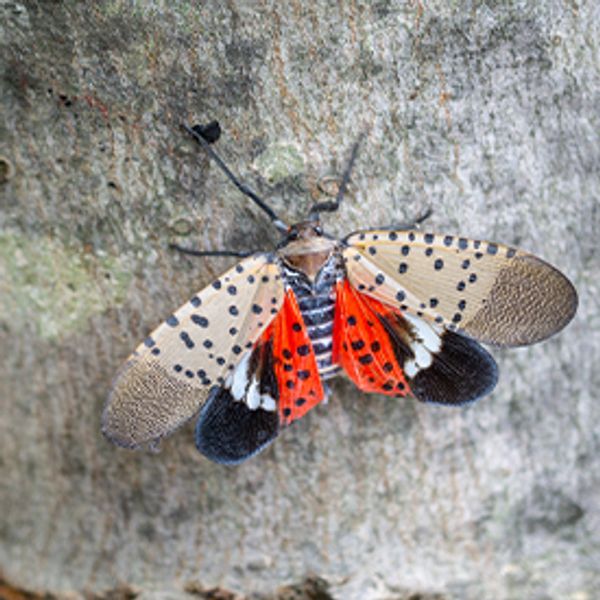Dealing with the Spotted Lanternfly

The spotted lanternfly is in the United States, and populations of this pest can currently be found in 14 states up and down the East Coast. Affected states have varying rules and protocols to help stop the spread of this invasive species, which often occurs on trucks traveling across state lines. Many states have begun roadside inspections for the pest as they try to prevent its movement and the destruction of crops. Dana Rhodes, the Pennsylvania Department of Agriculture's chief plant regulatory official, said the insect isn't a strong flier, so it relies on people to move it where it is going to go, which is why state officials are targeting trucking.
The pest was first spotted in Pennsylvania's Berks County in 2014, and now many states require employees at trucking companies and warehouses operating in quarantined areas to undergo training. Drivers display decals showing they have been trained, and trucks could be placed out of service if they have the pests on them. Enforcement continues to ramp up as more states combine forces to stop the invasive species.
Drivers in areas where the spotted lanternfly is present will be asked to add one more line item to their pre- and post-trip inspections — looking for the pests, Rhodes said. She added that drivers should be particularly aware of the insects during fuel and rest stops. "The longer you sit in an area, the more chances you have of picking up a hitchhiker," she said. "They will fly into the cab with you. If you have the cargo doors open on your truck, they’re going to fly in the back. Make sure you aren’t carrying something with you when you move out."
The spotted lanternflies aren’t active in winter and spring, but their egg masses are still living, and they will begin hatching in mid-May. They won't die off until late November. "If you find a bug, just kill it," Rhodes said.
Egg masses look like a smear of mud and contain 30-50 eggs, and one egg mass is enough to start a new colony, Rhodes explained. If drivers see an egg mass, they should scrape it off in a downward motion and squish it as they do it.
Rhodes advises drivers to make a note in their records if they find a lanternfly or egg mass and destroy it. She also recommended that drivers avoid parking under trees. "Parking in open areas is the best idea," she said.
The Pennsylvania Department of Agriculture worked with Penn State University to develop an online training and permitting course. "It is mastery-based, so you're quizzed as you go," Rhodes said, adding that company managers can take part in the course. There is also a course created specifically for drivers and warehouse workers. "If you take the Pennsylvania training, you're good to go in all states."
Enforcement of training requirements can vary by state. Pennsylvania has a team solely in charge of compliance and enforcement, Rhodes said. Fines can range from $300 to $20,000. However, the goal isn't to punish drivers for noncompliance.
"We want you in compliance, and we want to help you get there," Rhodes said. "We want to assist people in being compliant before we issue fines and penalties, but there are times when they are necessary."
Rhodes said states recognize that the best way to prevent the movement of the spotted lanternfly is to increase education and awareness of the pest, which feeds on 50-60 different species of plant material. "This is not a pleasant insect," she said.
Find out more by visiting the U.S. Department of Agriculture's plan for battling the spotted lanternfly.
